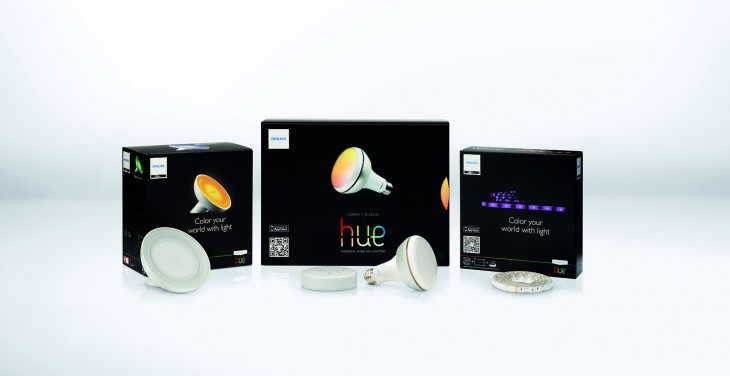
Beatrice Witzgall is the CEO and founder of LumiFi, a design and technology-centric company enabling people and businesses to unlock the full potential of connected lighting
The connected home and business continues to stir up vigorous debate among the tech community. Is the ‘Internet of Things’ just pie in the sky? Are ‘smart’ gadgets only for the geekiest among us, or gimmicks to fill booths at CES?
Connected lighting is one aspect of this nascent ecosystem, which is a reality today. By bringing wireless multi-colored LED bulb technology to a mobile-driven world, companies such as Philips, GE, Samsung and TCP are leading the charge to transform how we control and experience light in the spaces where we live, work, shop, play and stay.
The hospitality, retail and entertainment industries have long understood the positive affect that the right lighting can have on business. However, the legacy control systems for commercial lighting are expensive and complicated to implement or replace.
On the consumer side, a current lack of understanding or appreciation of lighting beyond its basic utility has largely left connected lighting in the home to early adopters. While home and business owners are starting to realize the benefits of connected lighting, several areas must continue to evolve in order to push wireless lighting technology and controls into the mainstream and/or home consumer market.
Price
As with any new tech, price is a significant barrier to entry, especially for home consumers. In 1997, DVD players cost upwards of $1,000—now you’re hard put to give one away.
Philips Hue, which is probably the best known product in the connected lighting space, currently sells three bulbs and a Wi-Fi bridge for around $200. While there are cheaper connected lighting options available, and more coming down the pike, if Philips Hue is the current market leader, additional options must meet the standard set by Philips at a price point affordable to average consumers.
While perhaps affordable for businesses, the investment should still be tied to some measurable return and a more clearly defined value proposition.
Hardware
The age of the incandescent bulb is coming to an end. Regulation coupled with more efficient technology is pushing rapid transition of all lighting to long-lasting LED bulbs.
Upgrading to wireless LED bulbs is a natural next step in this market shift. However, there must be continuous advancement to the hardware itself.
To date, one common gripe among reviewers of connecting light bulbs has been lack of brightness for commercial environments. While manufacturers are working to make bulbs that put out higher lumens, connected lighting needs to be effective for full home or commercial use.
Today’s bulbs may be sufficient enough to illuminate smaller rooms and apartments, but for mass adoption to take hold, they need to be able to fulfill the lighting requirements of larger homes and business owners such as hoteliers, restaurateurs and retailers looking to leverage lighting to wow customers and generate revenue.
Software
The Internet of Things is about the marriage of software and hardware, and connected lighting software needs to continuously improve in order to be successfully adopted. This is true particularly in terms of the set up process involved once the app is downloaded, as well as the entire user experience.
While typical solutions are offered by either the hardware providers or by third-party app developers, it’s no surprise that hardware providers might not make the best software. Similarly, most app developers don’t have any significant lighting expertise.
The best connected lighting apps will need to reflect a superior technology and UI, a professional knowledge of lighting design, and an easy setup that provides the best overall experience. While hardware generates the light, it’s the software that allows home and business owners to tap into the role of lighting beyond its most basic function.
The right connected lighting software enables anyone to compose and orchestrate a room’s lights to create a specific atmosphere and emotional connection.
Integration
The integration of connected lighting with other smart technologies will be a key requirement in the future. While cost reduction and improvements are needed, connected lighting is one of the easiest ways for people to dip their toes into the connected home or business waters today.
However, the long-term vision for connected technology involves much more than lighting. Home and business owners don’t want to have several competing technologies that don’t work together or require individual apps to control.
Ease-of-use
Finally, ease-of-use is a common gripe when it comes to nascent technologies. For connected lighting in particular, ease-of-use needs to be defined on two levels.
The first is on the implementation side. Hardware manufactures need to keep working to make the set-up process and wireless integration as seamless as possible. If the user needs to call a help desk for installation, it’s too complicated.
On the software side, the secret to success will be to provide users with curated and pre-composed lighting content. As most people are not design pros or artists by trade, too much choice can affect the experience in a negative way. Curated content both further enhances the set-up process while providing the emotional experiences connected lighting has to offer.
One thing almost everyone familiar with connected lighting can agree on is its exciting potential. The ability to wirelessly control a lighting system and leverage a multitude of lighting scenarios to set the right mood for any environment—all while cutting down on energy usage and ultimately saving money is something that does have value.
But, to realize the full potential of connected lighting, there’s still a lot of work to do.
Read next: Machines are taking control of the world, so why stop them?
Featured image credit: Shutterstock/archideaphoto
Get the TNW newsletter
Get the most important tech news in your inbox each week.







